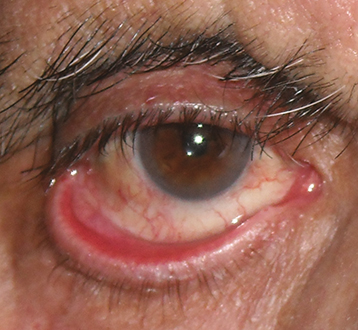(see Figure 6.2.1.)
Outward turning of the eyelid margin, which can lead to significant corneal exposure. In extreme cases, an exposed cornea can develop erosion, ulceration, perforation and permanent vision loss.
Superficial punctate keratopathy (SPK) from corneal exposure; conjunctival injection and thickening and eventual keratinization from chronic dryness. Eyelid scarring may be seen in cicatricial cases. Facial hemiparesis and lagophthalmos may be seen in paralytic cases.
